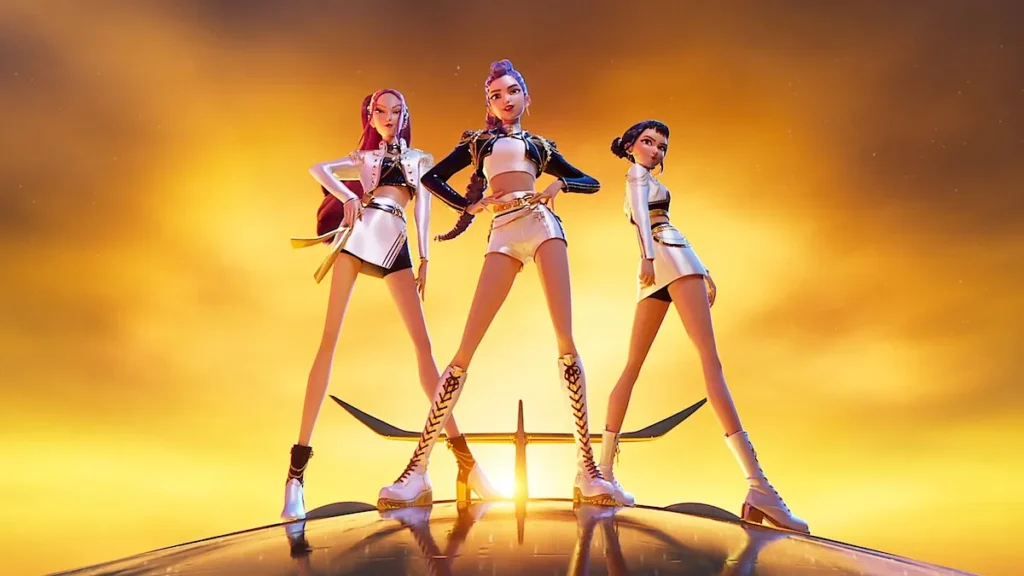The unstoppable rise of KPop Demon Hunters has reached its next act. Netflix and Sony Pictures Animation have officially announced a sequel to the record-breaking animated sensation that redefined both K-pop and animated cinema. Following its monumental success as Netflix’s biggest film of all time, the high-octane mix of music, mythology, and neon-drenched storytelling is set to return — though not immediately.
According to reports from IndieWire and Bloomberg, Netflix and Sony have finalized a deal to produce the sequel, with original co-directors Chris Appelhans (Wish Dragon) and Maggie Kang (The Lego Ninjago Movie) both signing on to helm the follow-up. However, fans eager to return to the world of demon-slaying idols will need patience: the sequel is projected to arrive sometime around 2029, though that date remains flexible.
err
KPop Demon Hunters debuted to thunderous reception, blending a sleek K-pop aesthetic with supernatural action in a way few films had ever attempted. The story followed a team of all-female pop stars who double as demon hunters by night, protecting Seoul from spiritual chaos between rehearsals, concerts, and existential crises.
Visually, the film was a feast — stylized animation dripping with iridescent color and rhythm. The character choreography mimicked real-world K-pop performance routines, while the soundtrack, produced in collaboration with major Korean producers, drove the film’s pace with explosive energy.
Critics praised it for fusing the grand emotional beats of anime with the polished spectacle of a Hollywood musical. Thematically, it offered a bold reflection on fame, identity, and resilience — using the metaphor of demon hunting as an allegory for battling inner and societal expectations.
The film not only dominated Netflix charts globally but also became a cultural talking point across South Korea, the United States, and Southeast Asia. It was particularly lauded for centering Asian women in an action blockbuster context — a rarity in both animation and Western studio filmmaking.
flow
The sequel deal marks a deepening alliance between Netflix and Sony Pictures Animation, whose previous collaborations (The Mitchells vs. The Machines, Wish Dragon) showcased a shared interest in stylized, emotionally rich animation. KPop Demon Hunters further cemented that partnership as a global content powerhouse.
Sony’s animation arm has been on a creative hot streak — from the Spider-Verse films to The Mitchells vs. The Machines— all defined by visual innovation and culturally nuanced storytelling. The studio’s willingness to experiment with hybrid animation styles and diverse voices made KPop Demon Hunters a natural extension of its evolution.
Netflix, on the other hand, continues to lean into animation as a key strategic battleground. After losing several major studio partnerships in the streaming wars, the platform has invested heavily in original and exclusive animated features. With KPop Demon Hunters, Netflix found its first true crossover phenomenon — one that united K-pop fandoms, anime enthusiasts, and mainstream audiences alike.
what
Plot details remain tightly under wraps, but given the first film’s cliffhanger ending — which teased new realms of demons and the emotional fallout of the group’s fame — fans are already theorizing. Appelhans and Kang’s return all but guarantees a continuation of the story’s core tone: emotionally charged, musically kinetic, and visually audacious.
Maggie Kang has previously discussed her desire to explore “the duality of performance and self,” hinting that the sequel could dig deeper into the characters’ personal lives outside the spotlight. Meanwhile, Appelhans’ involvement suggests a continued emphasis on cross-cultural themes and mythological world-building.
Technically, the film is expected to expand on the stylized animation pipeline that Sony refined with Across the Spider-Verse. Given the time frame — with release not likely before 2029 — the animation team will have several years to push the limits of visual experimentation even further.
the long wait
The biggest shock for fans is the timeline. Animated features of this scale typically require four to five years of production, especially when incorporating music, motion-capture choreography, and high-end effects. Sources indicate that development is still in early stages, with the script and soundtrack both in flux.
The 2029 projection is more of a placeholder than a hard date, as both studios want to ensure the sequel meets the same level of artistic precision and global appeal as the original. The extended timeline also allows for coordination with the music industry, given that the first film’s soundtrack featured collaborations with real K-pop producers and vocalists.
In a sense, the delay could benefit the franchise — allowing it to mature and expand its creative reach rather than rush to capitalize on short-term hype. As animation fans have seen with projects like Spider-Man: Beyond the Spider-Verse, complex visual storytelling demands time.
culture
KPop Demon Hunters became more than just a movie; it became a pop-cultural milestone. Its influence reached fashion, music, and fan culture. Global K-pop acts cited the film’s visuals as inspiration for music videos, and cosplay communities quickly turned its stylized designs into staples at conventions.
The film also resonated within the broader conversation about representation. It stood at the intersection of Korean cultural export and Hollywood’s ongoing search for new storytelling voices. By blending Eastern mythology with pop futurism, KPop Demon Hunters carved a new subgenre — one that celebrated Asian identity through globalized storytelling rather than tokenism.
In academia, critics likened it to Black Panther in how it offered an empowering narrative wrapped in entertainment spectacle. Its success demonstrated to studios that diverse, women-led animated features can carry billion-dollar streaming weight.
fin
The announcement of a KPop Demon Hunters sequel confirms what fans already knew: this franchise isn’t done transforming how global audiences experience animation. With Chris Appelhans and Maggie Kang steering the creative vision once again, the follow-up has every chance to elevate the first film’s emotional depth and visual dynamism.
Yes, 2029 feels far away — but if history has taught us anything, patience pays off when art and innovation align. By then, both Netflix and Sony Pictures Animation could be operating in a new era of digital cinema, where animated blockbusters rival live-action epics in scope, emotion, and influence.
For now, the stage lights dim, the idols rest their blades, and the fans wait — humming the songs of their demon-slaying heroines, until the beat drops again.
No comments yet.








